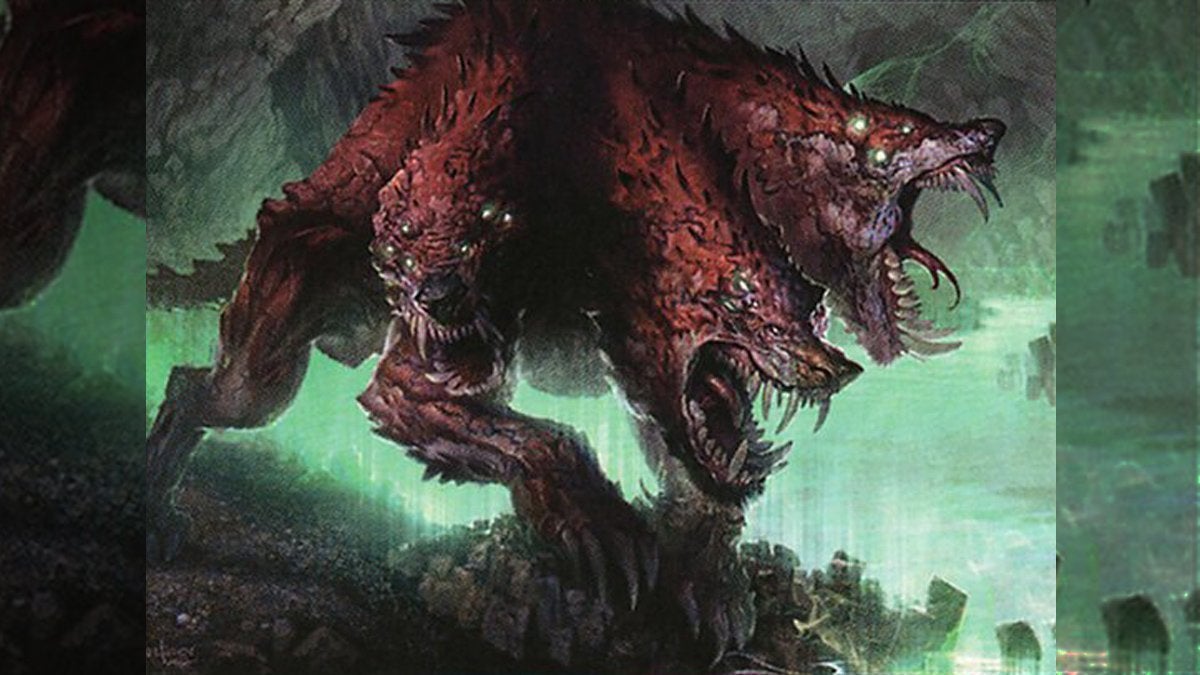![]() Key Takeaway
Key Takeaway
Menace is a static ability (one that’s always active) that means a creature with it cannot be blocked by less than two opponent creatures. When blocked by two creatures, the effect of Menace stops being relevant and the combat phase unfolds as normal.
Using an ability like Menace in Magic: The Gathering can be useful for offensive strategies. If your opponent isn’t prepared, truly menacing attacks can drain their life points turn after turn. Don’t let up—keep the pressure on to crush your adversary!
Table Of Contents
What Is Menace?
When a creature with the ability Menace attacks, it can only be blocked by two or more creatures. If you attack with a creature that has the Menace ability and your opponent only has one creature, they cannot block the incoming attack. As a result, your Menace creature damages your opponent through a direct attack.
Menace in Magic: The Gathering is a static ability—which means it is always active and does not need to be triggered nor does it have any cost to activate. However, Menace is only useful when you’re attacking and does nothing when you’re being attacked by an opponent.
An Example of How Menace Works
Let’s say you have an Alley Strangler in play and your opponent has a Fire Dragon. Since your opponent only has one creature, they cannot block attacks from your Alley Strangler. This allows you to attack your opponent directly. When done, Alley Strangler’s attack reduces your opponent’s life points by two since Alley Strangler’s power is two.
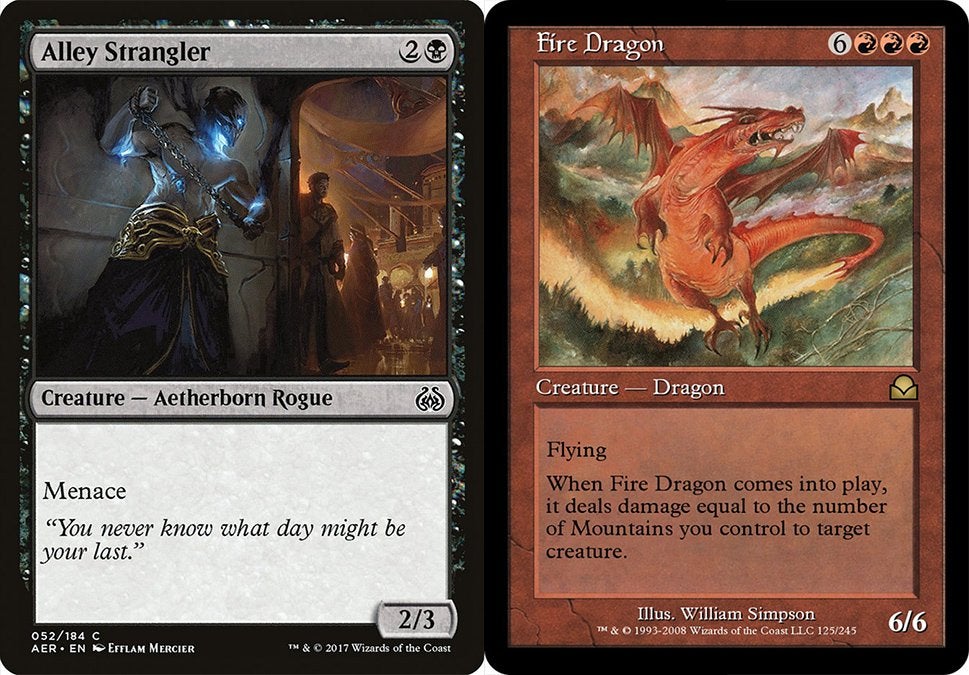
Alternatively, let’s say your opponent has two Fire Dragons. If you attack with Alley Strangler now, your opponent can block with both of their Fire Dragons. After the block is initiated, the combat phase unfolds as normal.
Your Alley Strangler deals its power value as damage to the first of the blocking Fire Dragons (blocking order is decided by the defending opponent). The first Fire Dragon’s toughness is reduced by two (a toughness of six minus two power from the attacking creature results in four remaining points of toughness).
Next, your Alley Strangler takes six damage from the first Fire Dragon’s power value, and the Alley Strangler gets destroyed since it has a toughness value of less than six. The second Fire Dragon doesn’t get involved at all—it’s only needed to initiate the block against your menacing black card.
How to Use Menace
Menace is a great ability to have in a deck that focuses on dealing direct damage. In the MTG community, these are often known as “aggro decks.” In this case, “aggro” is short for “aggravation” and refers to decks that revolve around using straightforward tactics to reduce the life points of an opponent.
Always Be on the Attack
Use creatures with Menace to hurt your opponent as much as possible before they start getting out their own creatures with which to block. Since your opponent needs at least two creatures to block a creature with Menace, you can land some easy early hits. Try to cast as many creature cards with Menace as you can in the early parts of a game to overwhelm your opponent and keep the pressure on!
With that said, you don’t want to attack blindly. Pay attention to the kinds of cards your foe is using and try to predict how they’ll defend against your assault. Never underestimate your adversary as such ignorance usually leads to the loss of an advantage or even one’s downfall.
Multiply the Menace
When trying to dominate your opponent, using cards that give creatures the Menace ability is another strategy worth considering. You want as many Menace creatures on your side as possible.
Once you have a front line filled with creatures that can’t be blocked easily, your advantage becomes an avalanche. This can be done even without all of your creatures having Menace as an innate ability.
For example, creature cards like Baleful Beholder let you blitz your opponent by giving all of the creatures you control Menace for one turn.
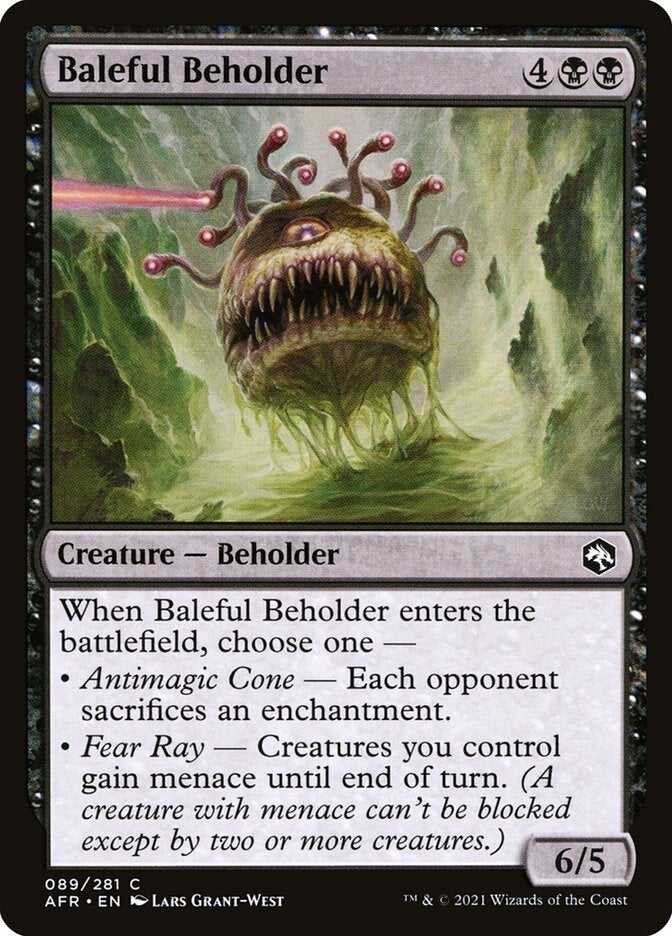
A brutal blitz like this can be done by casting various creatures to fill up your side as much as possible until you have enough mana to bring out Baleful Beholder.
Then, as your opponent is starting to fall behind on the creature count, you cast Baleful Beholder and attack with all of your other creatures. If done well, a one-turn all-out assault like this can end the game.
There’s Menace…and Then There’s SUPER Menace
There’s another type of Menace in Magic: The Gathering: Super Menace. However, Super Menace is a community-created term. This term refers to a superior type of ability that’s very similar to Menace but does not have a keyword assigned to it.
A creature that has Super Menace is one that can only be blocked by three or more creatures. When this ability appears on a card, its descriptive text always appears in full instead of having an evergreen keyword there like with the Menace ability. One example of Super Menace is the creature card Pathrazer of Ulamog.
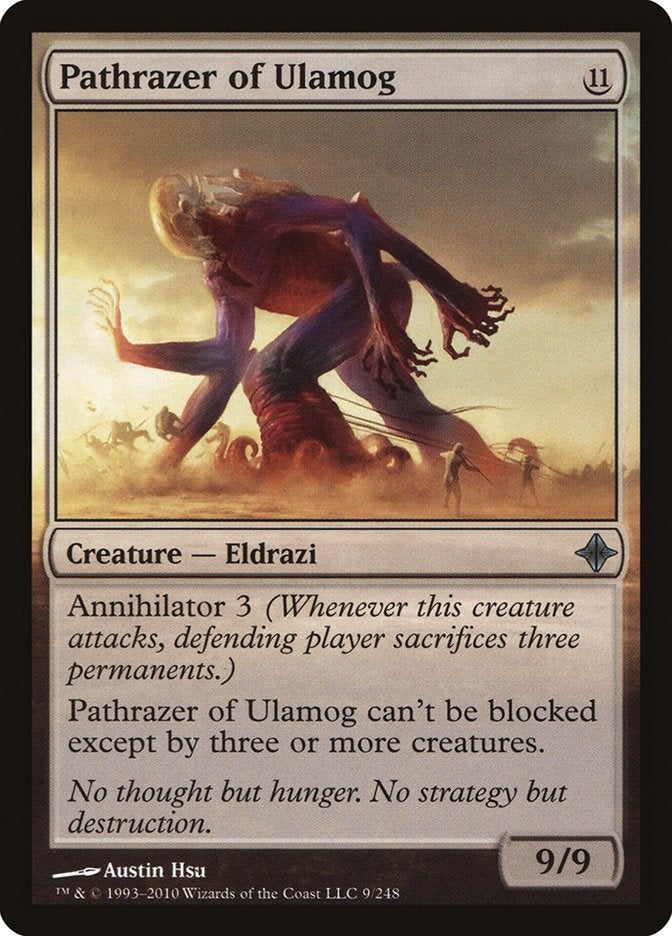
Most cards with Super Menace have high mana costs and are meant to be played in the latter parts of a game. With that said, at that point, they can end the game in your favor if used properly.
How to Counter Menace
The best way to counter cards with Menace is to outright destroy them with a sorcery or an instant card. If that’s not a tactic you use in your deck, there are other ways of dealing with creatures that have the Menace ability—such as locking them down in some way.
Tap the Threat
Tapping your opponent’s creatures before they can attack is a great way to negate Menace. Menace is only useful when a creature with this ability attacks. If such a creature cannot attack, it’s useless. What’s more, if you prevent a Menace creature from untapping, it’ll be dead weight. A great card to do this is Bubble Snare.
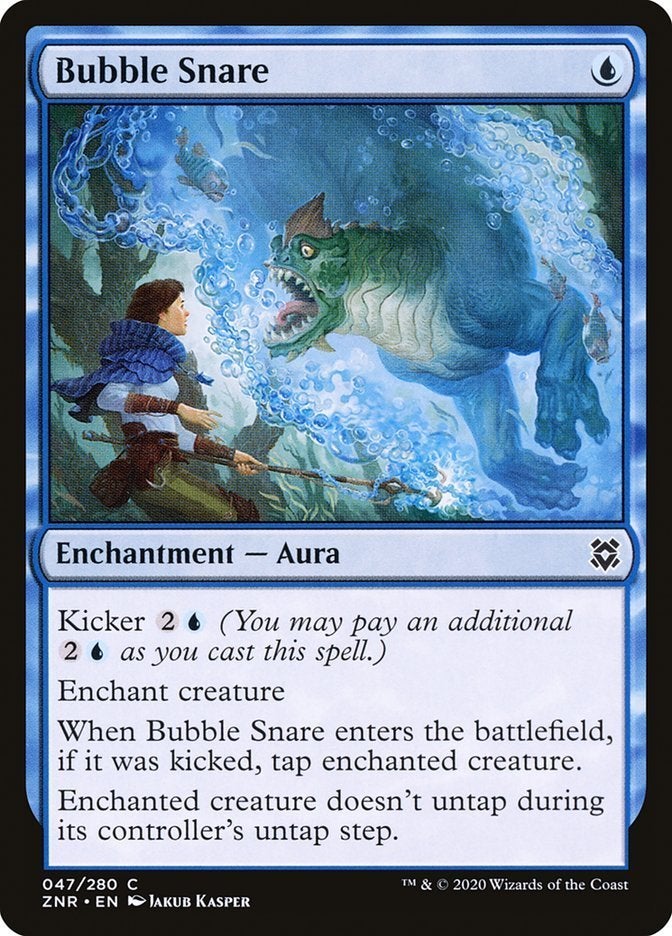
Enchant the Enemy
Speaking of enchantment – aura cards, another useful one for locking down threats is Pacifism. This white card prevents the enchanted creature from attacking and blocking.
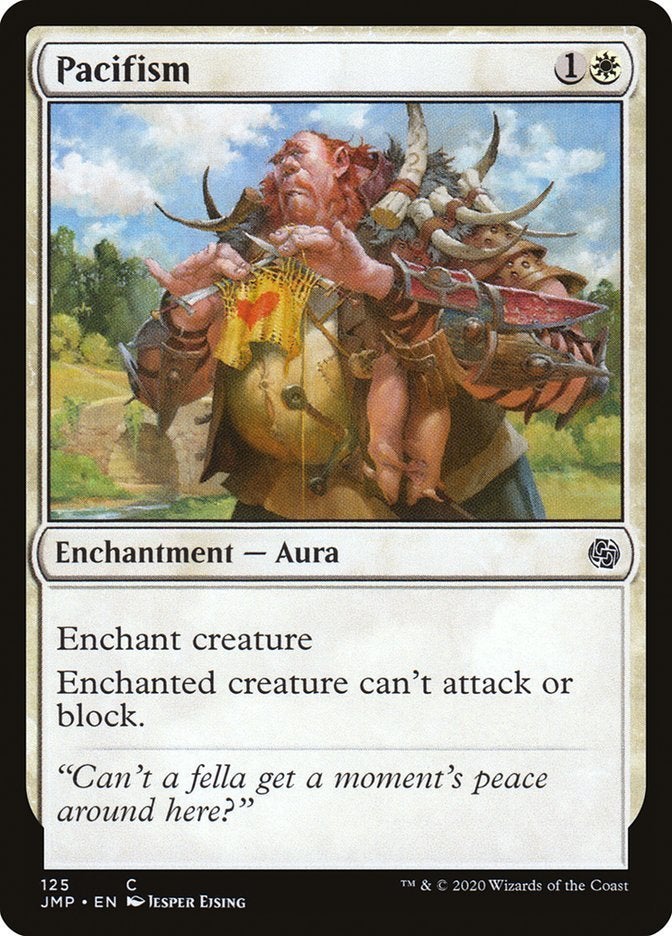
If you have enough enchantments like this in your deck, you won’t need many creatures to block. This is a common theme in a lot of control decks, which—on average—fare better against aggro decks.
Reduce the Rampage
There are also cards out there that decrease the power of a creature either temporarily or permanently. Use such cards to make the menace so weak that it’s not worth attacking with them.
If you can drop a creature’s power to zero, you’ll nullify the treat completely. On top of making their offense weaker, this also lets you attack your foe with less risk. Small advantages can add up!
Swarm Your Opponent With Small Creatures
Menace in Magic: The Gathering is almost useless against large numbers of small creatures. Decks that focus on creating a bunch of token creatures can easily block most attacks once they’ve set up their strategy.
Even more importantly: swarms can usually replenish their numbers. This makes attacking them head-on a bad idea. A good example of this is the legendary creature Teysa, Orzhov Scion. If you can keep sending black creatures from play to the graveyard, you can keep creating walls of white tokens.
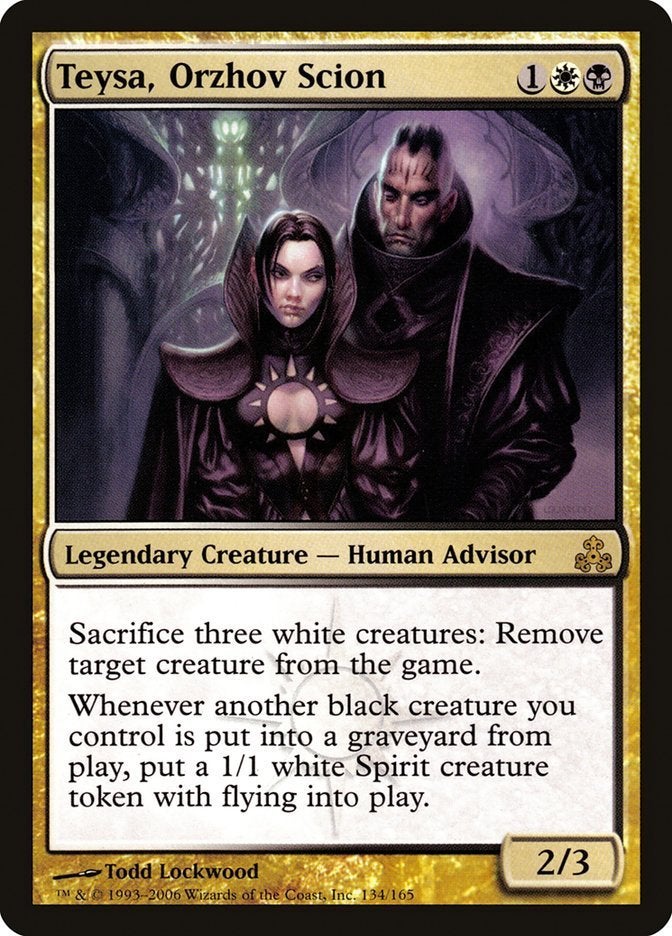
Since Menace in Magic: The Gathering is all about direct attacks—focus on enabling your creatures to do so. Support your creatures with Menace by giving them protection from threats or being able to bring them back from the graveyard. Most importantly: you want to use Menace to gain an early advantage and keep it. If you get the ball going, you’ll be able to steamroll your opponent!


